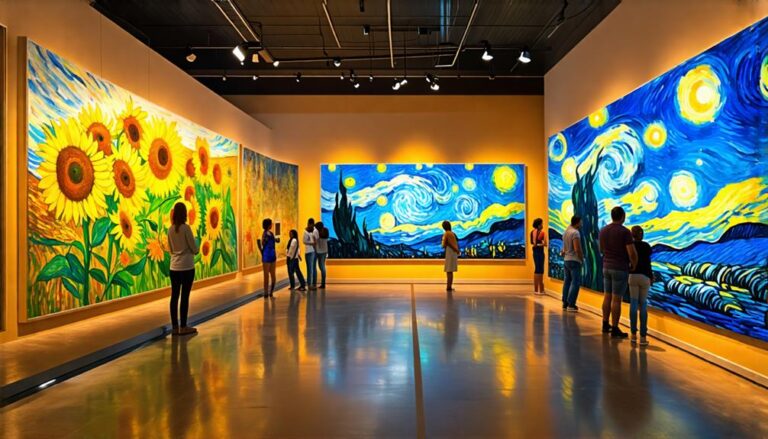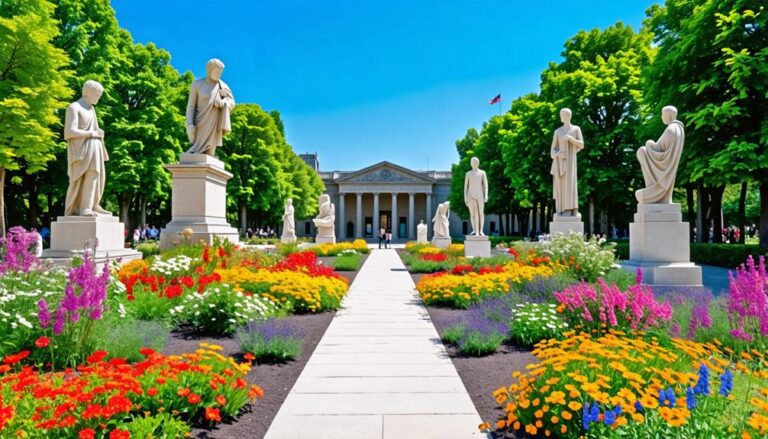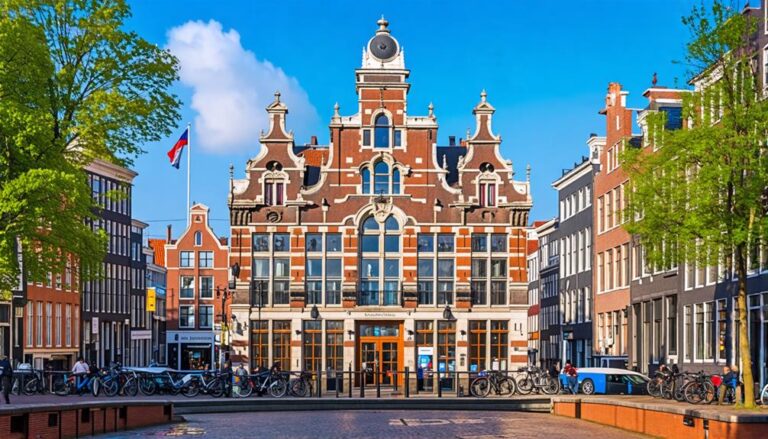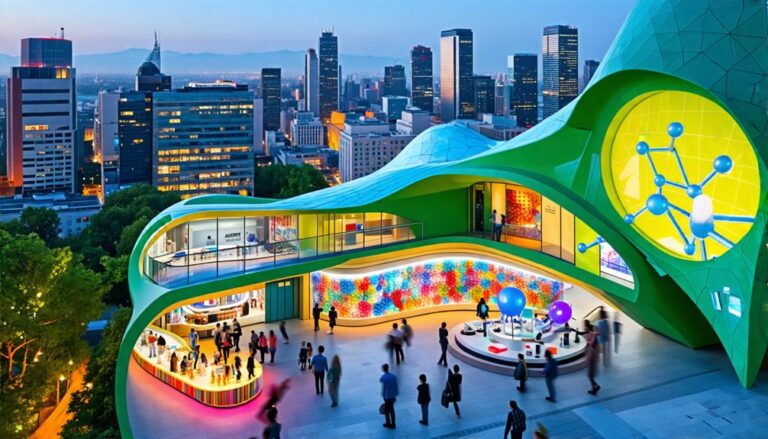Teylers Museum: Oldest Museum in the Netherlands

Founded in 1784, Teylers Museum is the oldest museum in the Netherlands. It showcases Enlightenment ideals with its vast and varied collections. Situated in Pieter Teyler's House, the museum features well-preserved fossils, unique minerals, scientific instruments, and historical artworks. The neoclassical architecture, including the Oval Room, adds to its charm.
Over the centuries, the museum has expanded. It added wings to accommodate growing research and educational resources. The famous Lorentz Lab is one such addition. Visitors can engage with interactive exhibits and educational programs. This creates an immersive experience that highlights the museum's dedication to public access and intellectual growth.
Whether you are a history buff or a science enthusiast, Teylers Museum offers a rich dive into the past. It stands as a testament to human curiosity and the quest for knowledge. Explore its storied halls and discover its significant contributions to science and art.
Key Takeaways
Teylers Museum, founded in 1784, holds the title of the oldest museum in the Netherlands. Its eclectic collection features fossils, minerals, scientific instruments, coins, medals, paintings, and drawings. The Oval Room, designed by Leendert Viervant, highlights neoclassical architecture and historical scientific tools. The museum also houses the Lorentz Lab, an essential site for historical scientific research. Interactive exhibits and educational programs captivate visitors with a blend of art and science.
When planning vacations to the Netherlands, a visit to Teylers Museum offers a unique glimpse into Dutch history and culture. The museum's diverse artifacts provide an enriching experience for all ages.
Teylers Museum Overview
Established in 1784, Teylers Museum has been a beacon of art and science, continuously welcoming the public for nearly 250 years. As the oldest museum in the Netherlands, it offers an extraordinary journey through time, reflecting the Enlightenment ideals of its founder, Pieter Teyler van der Hulst. A visit to Teylers Museum reveals a diverse collection that captivates and educates.
The museum's holdings include a fascinating array of fossils and minerals, scientific instruments, coins, medals, paintings, and drawings. These treasures are displayed in their historical settings, giving visitors a unique glimpse into the 18th and 19th centuries. The scientific instruments tell the story of human curiosity and innovation, while the fossils and minerals remind us of the Earth's ancient past.
Public access remains a cornerstone of Teylers Museum, showcasing its commitment to education in art and science. Walking through the museum, you can't help but feel the weight of history and the spirit of discovery in every hall. Each piece in the collection invites you to explore, learn, and be inspired by the wonders of our world.
Pieter Teyler's House
As you plan your vacation to the Netherlands, consider adding Teylers Museum to your itinerary. This fascinating institution, founded in 1784, began in Pieter Teyler's House. Pieter Teyler van der Hulst, a fervent supporter of Enlightenment ideals, left a legacy that shines in every part of this historic building. His passion for religion, art, and science is evident here, creating a living museum that reminds us of Teylers Museum's origins.
Visitors can explore the ground and first floors with their museum entrance ticket. This isn't just a historical tour; it's a deep dive into one of the Netherlands' oldest museums. The house links Teyler's Enlightenment ideals with today's society.
The carefully preserved rooms and artifacts offer insight into how Teyler's vision still matters today. The house not only helps us understand the museum's beginnings but also highlights Teyler's dedication to intellectual and cultural growth. Exploring Pieter Teyler's House, you'll see how history and modern views blend, making your visit truly enlightening.
While in the Netherlands, Teylers Museum offers a unique glimpse into the past and present, perfect for any vacation itinerary.
The Oval Room
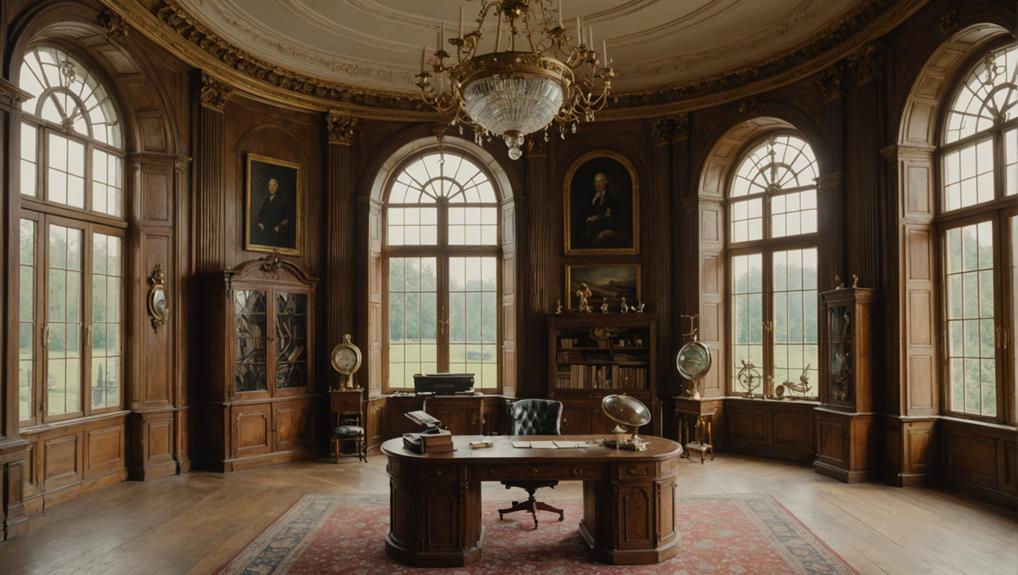
Step into the Oval Room, where neoclassical architecture blends with historical scientific instruments. This place offers a glimpse into the 18th century.
Leendert Viervant, a renowned architect, designed this room. It showcases instruments used by Martinus van Marum, reflecting the scientific advancements of that era.
The room has a significant mineral collection. There are twelve encyclopaedia bookcases designed to maximize natural light for scholarly study. The collection and design make it an ideal spot for anyone interested in the history of science and architecture.
Visiting the Netherlands? Don't miss out on its unique museums. The Oval Room is a must-see for history and science enthusiasts.
Historical Scientific Instruments
How does the Oval Room, opened in 1784, bring us face-to-face with the scientific instruments and methodologies of the 18th century? Stepping into this historic space at Teylers Museum, we find ourselves surrounded by the very tools Martinus van Marum once used. His work, emblematic of the Enlightenment ideals, is showcased through these historical scientific instruments, offering us a direct link to the past.
The room's meticulously organized mineral collection, preserved as it was in the 18th century, further immerses us in the era's scientific fervor. This collection serves as a demonstration of the evolution of scientific inquiry, reflecting the meticulous nature of research during that time.
Leendert Viervant's architectural design, with its emphasis on natural light, enhances our experience, allowing us to appreciate the instruments in the same way as early scientists.
- Scientific Instruments: Tools used by Martinus van Marum for various experiments and demonstrations.
- Mineral Collection: A window into 18th-century geology and mineralogy, maintained in its original arrangement.
The Oval Room remains integral to Teylers Museum, embodying the spirit of discovery and knowledge that defined the Enlightenment.
Neoclassical Architectural Design
Stepping into the Oval Room, you immediately notice Leendert Viervant's neoclassical design. It reflects the Enlightenment's ideals of symmetry, natural light, and education. Opened in 1784, this space embodies the Teylers Museum's mission to engage the public with knowledge and discovery. The room's balanced proportions and thoughtful organization underline its neoclassical style.
The Oval Room's collection of 18th-century scientific instruments is arranged for both research and public demonstrations, preserving its historical significance. The mineral collections are displayed using 18th-century techniques, highlighting the timeless allure of scientific exploration. Natural light floods the upper gallery through strategically placed windows, creating an inviting educational atmosphere.
The twelve encyclopaedia bookcases, positioned to maximize natural light, add to the room's educational vibe. As the oldest part of the Teylers Museum, the Oval Room stands as a symbol of early scientific inquiry and public engagement.
| Feature | Description |
|---|---|
| Neoclassical Design | Reflects Enlightenment ideals: symmetry, light, education |
| 18th-century Display | Historical scientific instruments and mineral collections |
| Educational Atmosphere | Natural light, encyclopaedia bookcases, public engagement |
The Oval Room's neoclassical architectural style continues to inspire and educate. It preserves the spirit of the Enlightenment for future generations.
19th-Century Expansions
In 1826, Teylers Museum opened a new wing to showcase its growing collections and cater to the public's rising interest in art and science. This expansion was a milestone, highlighting the museum's dedication to scientific research and education. The new wing offered extra room for the museum's varied collections, such as the Numismatic Collection and the Prints Cabinet, which fascinated visitors.
The ground floor of this new wing was a palaeontology museum and picture gallery. It displayed an extraordinary range of fossils and artworks. This setup emphasized the museum's unique blend of art and science, a trend popular in 19th-century public institutions.
For those planning a vacation to the Netherlands, Teylers Museum is a must-visit. The additional rooms for lectures show the museum's commitment to public education and discussion. The diverse collections, including the Numismatic Collection and Prints Cabinet, highlight the museum's extensive offerings. The expansion responded to the growing curiosity and enthusiasm for scientific and artistic achievements.
Teylers Museum's 19th-century expansions not only increased its physical space but also cemented its status as a leading center for knowledge and culture. So, if you're visiting the Netherlands, don't miss the chance to explore this remarkable museum.
Scientific Instruments
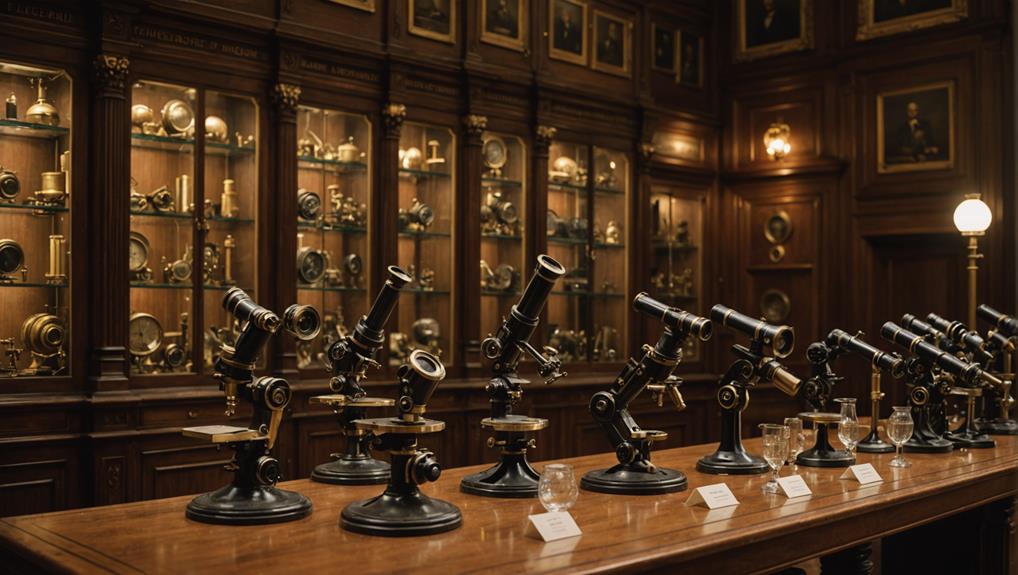
Visitors will find the Instrument Room at Teylers Museum filled with remarkable historical scientific instruments. These are meticulously arranged to reflect the museum's strong commitment to scientific exploration. Our collection includes devices used by notable figures like Martinus van Marum. These tools highlight their historical significance in advancing research and education.
The Lorentz Lab, named after Nobel laureate Hendrik Antoon Lorentz, is another key attraction. It served as a hub for scientific research from the museum's establishment in 1784 until the early 20th century.
The Teylers Museum's array of scientific instruments isn't just a static display. It embodies our mission to show the intrinsic link between art and science. By examining these tools, visitors can appreciate how scientific inquiry and artistic expression have historically intertwined. This has enriched both fields.
Our educational programs, held in the renovated Lorentz Lab, allow students to engage in hands-on learning experiences. They can experiment with replicas of these historical instruments, making scientific history come alive.
Our collection fosters a deeper understanding of scientific principles. It nurtures a sense of wonder and curiosity. It stands as proof of human ingenuity and the relentless pursuit of knowledge.
Visitor Experience
To fully enjoy a trip to the Netherlands, a visit to Teylers Museum in Haarlem is a must.
The museum's interactive exhibits captivate both young and old alike, offering hands-on experiences that are both fun and educational.
The educational programs and public lectures add another layer of understanding, presenting the museum's collections in the broader context of art and science.
These enriching activities not only deepen our knowledge but also ensure a memorable and stimulating experience for everyone.
Interactive Exhibit Highlights
Teylers Museum in Haarlem offers an engaging experience for all ages. From July 6 to September 1, 2024, visitors can dive into interactive exhibits that make learning both fun and enlightening. The museum's 18th-century mineralogical collection is a highlight. You can marvel at historical specimens displayed in their original cases. These exhibits showcase the beauty of minerals and invite you to explore their scientific and historical contexts.
The museum provides free audio tours and multimedia resources. These tools enrich your understanding of its diverse collections. The audio tours offer fascinating insights into the art and science on display, making your visit more meaningful.
Family-friendly programs are scheduled throughout the summer, catering to visitors of all ages and fostering a love for learning. There are also hands-on workshops that allow you to engage directly with scientific and artistic concepts through interactive sessions.
Additionally, you can observe and interact with historic collections, bridging the past and present in a tangible way.
A visit to Teylers Museum adds depth to any vacation to the Netherlands.
Educational Programs Available
Exploring Teylers Museum's interactive exhibits is just the beginning.
Let's dive into the enriching educational programs available for all ages. The museum offers a variety of opportunities designed to engage both children and adults, blending art and science seamlessly. Workshops and demonstrations occur throughout the year. You can interact hands-on with the museum's collections and themes, deepening your understanding and appreciation.
For a more self-directed experience, you can use the free audio tours. These provide in-depth information on exhibitions and offer historical context that enhances your visit. Public lectures are another highlight. Experts delve into various topics related to the museum's collections and contemporary issues, making complex subjects accessible and engaging.
Schools and educators benefit greatly from the museum's tailored programs and guided tours. These align with curricular objectives to promote learning. These educational resources ensure students of all ages can connect with the museum's rich offerings in a structured yet stimulating environment.
Teylers Museum's commitment to education shows in its diverse array of programs. It's a place of continuous discovery and intellectual freedom for everyone.
When planning your vacation to the Netherlands, a visit to Teylers Museum in Haarlem offers an enriching experience blending art, science, and history.
Frequently Asked Questions
What Is the Oldest Museum in the Netherlands?
Teylers Museum is the oldest museum in the Netherlands. It boasts a rich history and famous exhibits. The architectural significance is stunning. It offers a diverse collection that highlights various eras. Educational programs provide visitors with unique experiences. Art restoration techniques ensure its lasting cultural impact.
Which Is the Oldest Museum in the World?
Picture yourself exploring the Rijksmuseum in Amsterdam. It houses masterpieces that reflect the Netherlands' rich cultural tapestry. As one of the most esteemed museums globally, its historical significance is profound. Balancing the preservation of priceless art and navigating funding challenges, the museum offers educational programs and unforgettable visitor experiences.
What Is the Largest and Most Prestigious Museum of Art and History in the Netherlands?
For anyone planning a vacation to the Netherlands, the Rijksmuseum is a must-visit. Located in Amsterdam, this grand museum stands as the largest and most prestigious in the country. It showcases a rich collection of Dutch art, cultural heritage, and historical artifacts.
The Rijksmuseum offers an array of world-class exhibits that include masterpieces from renowned artists like Rembrandt and Vermeer. The museum also excels in art restoration and provides engaging educational programs for visitors of all ages.
When you visit, you'll encounter unique exhibits that span centuries of Dutch history. From intricate paintings to historical documents, every piece tells a story. The Rijksmuseum is not just a museum; it's a journey through time.
What Is the Oldest Museum in Berlin?
When planning vacations to the Netherlands, consider visiting renowned museums. The Rijksmuseum in Amsterdam, opened in 1885, showcases Dutch art and history. Its Gothic and Renaissance architecture houses masterpieces like Rembrandt's "Night Watch".
For a unique experience, explore the Van Gogh Museum. It holds the largest collection of Vincent van Gogh's works. You'll see his famous paintings and learn about his life through detailed exhibits.
The Anne Frank House offers a poignant glimpse into history. Located in Amsterdam, it preserves the hidden rooms where Anne Frank wrote her diary during World War II.
Don't miss the Mauritshuis in The Hague. This museum features works by Vermeer, including "Girl with a Pearl Earring". Its intimate setting allows for a close look at Dutch Golden Age paintings.
Each museum provides educational programs and guided tours. They make the visit enriching and informative. Enjoy your cultural journey through the Netherlands' rich artistic heritage.
Conclusion
Teylers Museum, the oldest museum in the Netherlands, offers a fascinating mix of history, science, and art that captivates every visitor. In the heart of Haarlem, the museum unfolds a journey through time.
We explored Pieter Teyler's House, a masterpiece of 18th-century architecture. The Oval Room, with its stunning dome and natural light, invites admiration. The 19th-century expansions add grandeur and depth to the museum's character.
The scientific instruments on display reveal past innovations. From early electrical devices to intricate microscopes, each piece enhances our understanding of scientific progress.
Visiting Teylers Museum isn't just educational. It's an immersive experience into the rich cultural heritage of the Netherlands. This journey showcases the nation's historical and artistic treasures in a truly remarkable way.

